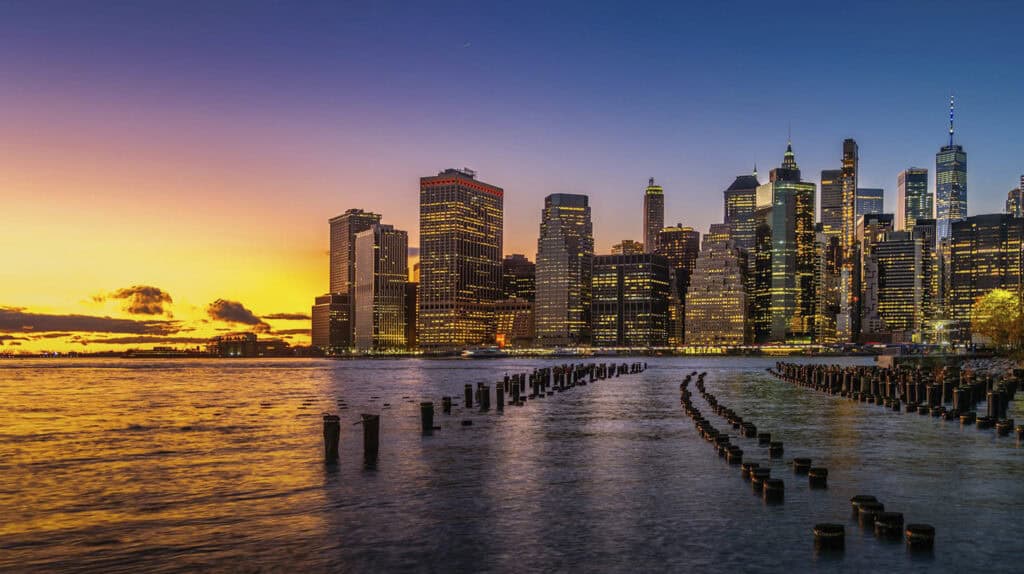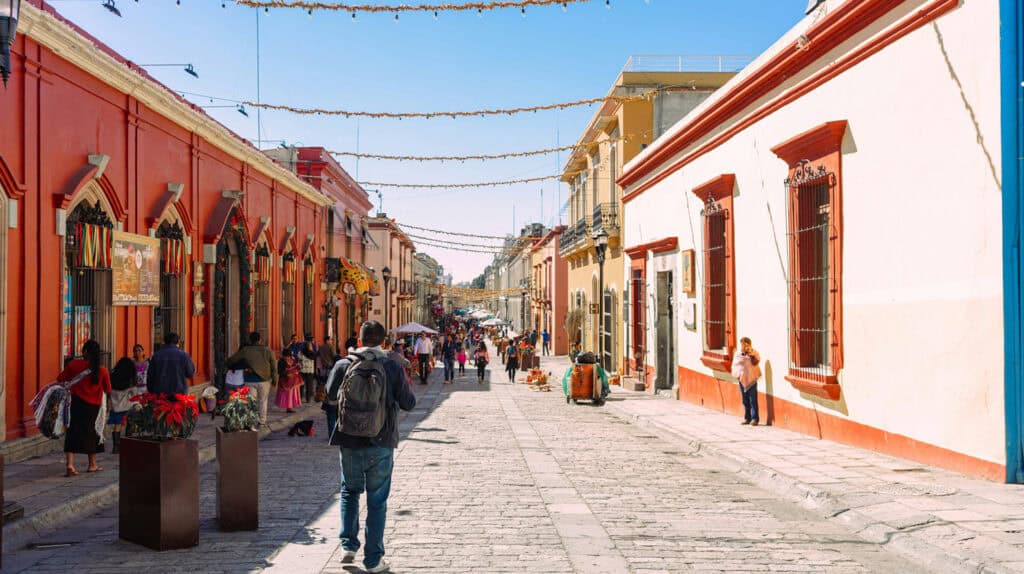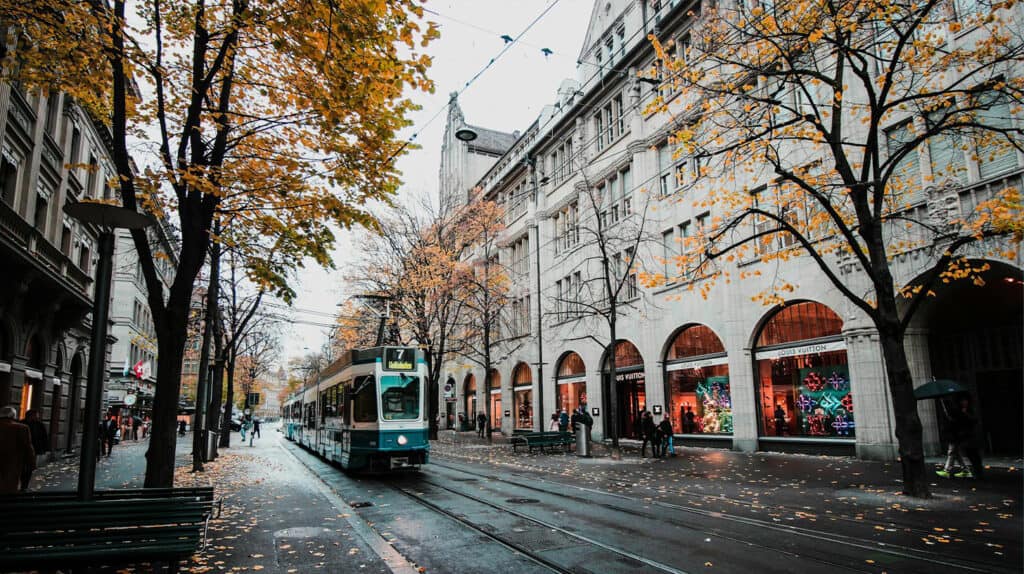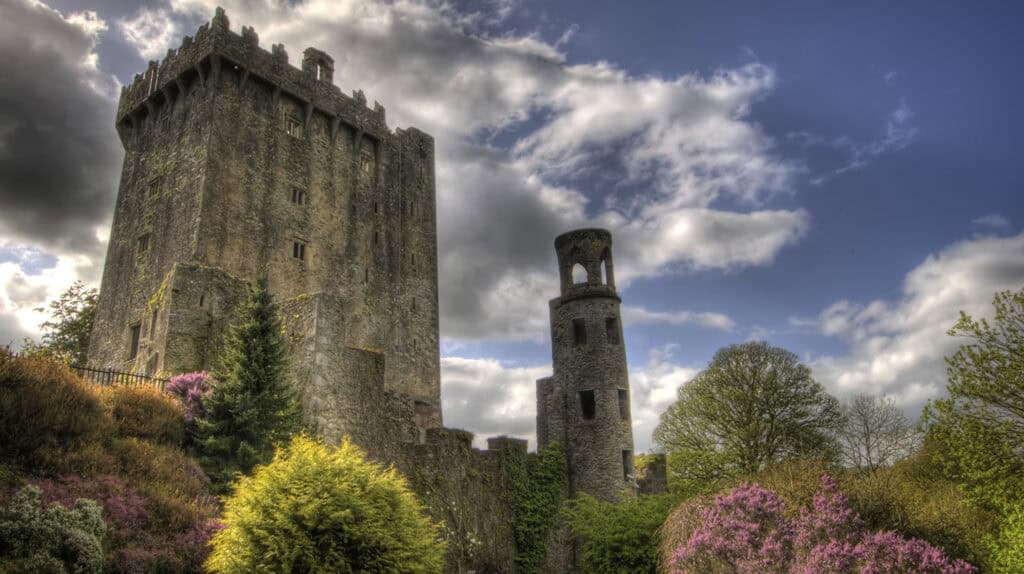
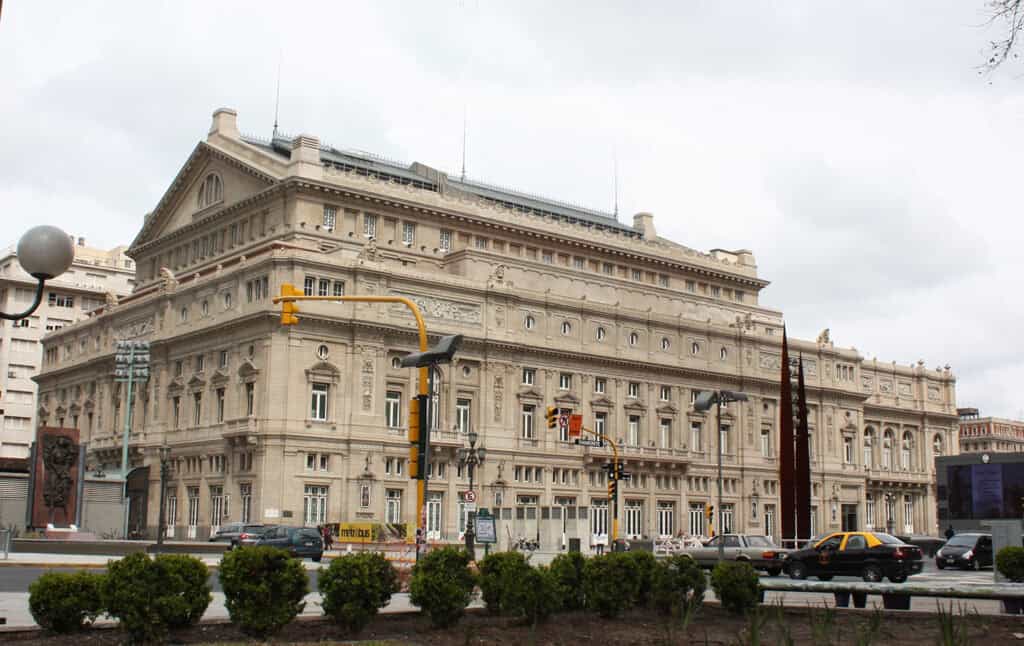
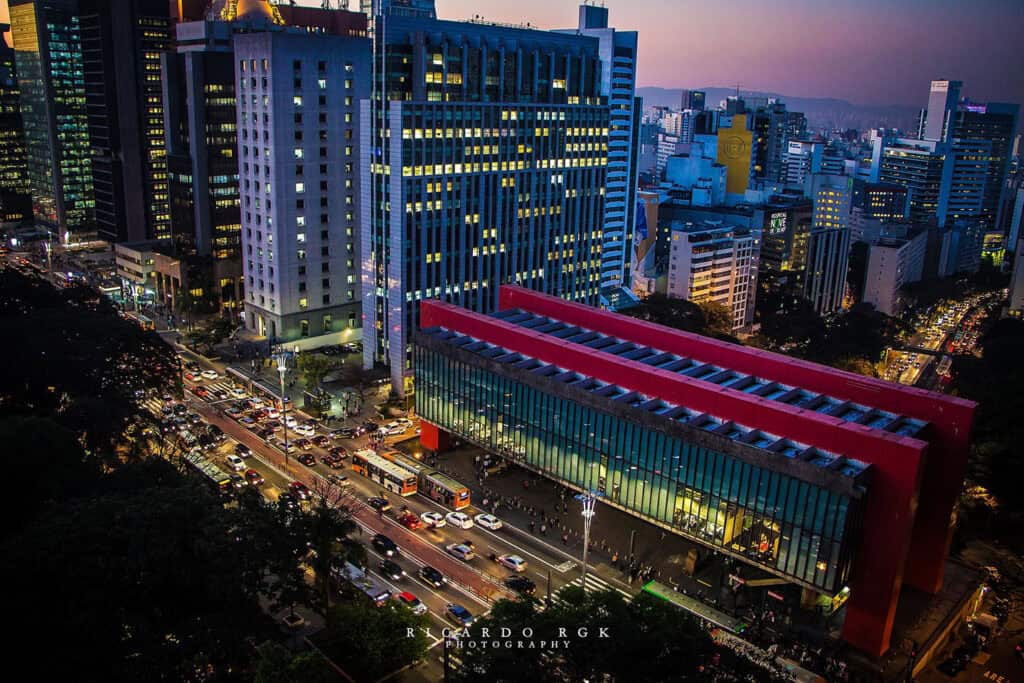
Have you ever wondered what makes the most iconic landmarks in South America so unforgettable? These architectural masterpieces aren’t just sights to see—they’re sources of endless inspiration for designers and visionaries alike.
As a designer or enthusiast, you deserve to understand the unique elements that make these landmarks in South America stand out. The path to harnessing their influence can feel daunting, but you’re not alone.
Exploring various types of architectural styles and architectural building types will help you appreciate the beauty and craftsmanship behind these iconic structures.
At Landmarks Architects, we specialize in helping you translate the essence of these timeless South American architectural landmarks into your creative work. We’re here to guide you every step of the way.
In this article, we will cover:
- The cultural and architectural significance of South America’s top famous landmarks
- Design elements that make these structures iconic
- How you can incorporate their beauty into your projects
Ready to unlock the secrets of these awe-inspiring landmarks? Keep reading to discover how their timeless designs can fuel your next masterpiece.
3 Top Iconic Landmarks
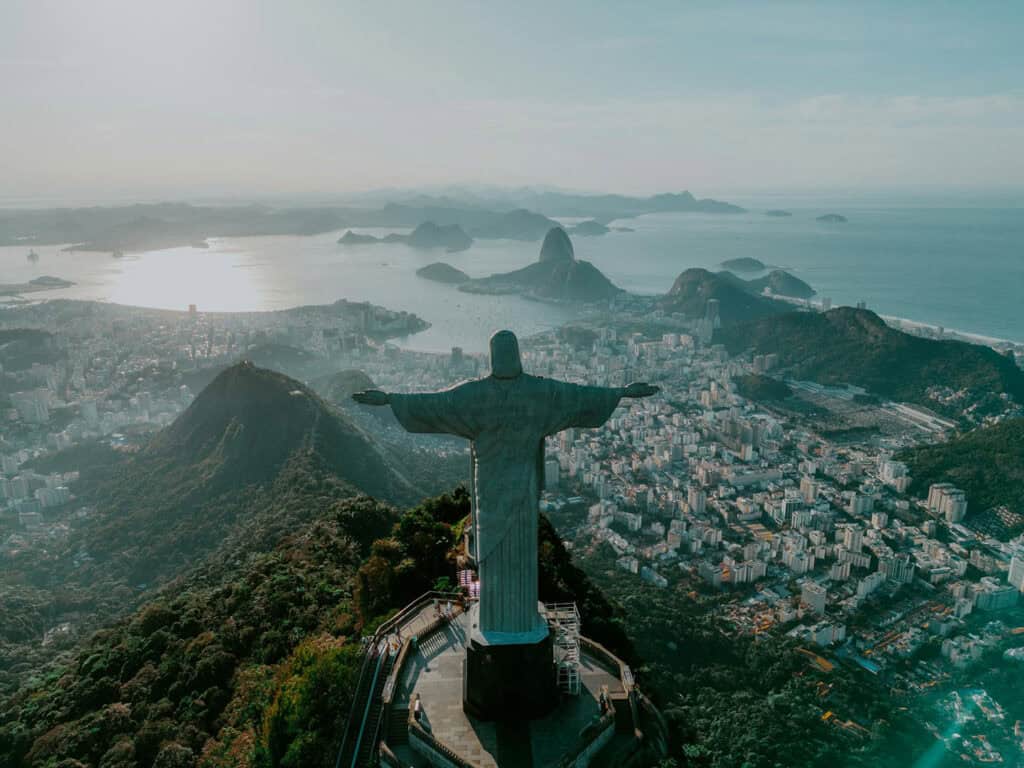
See Also El Salvador Landmarks: 10 Iconic Sites You Must See
1. Machu Picchu
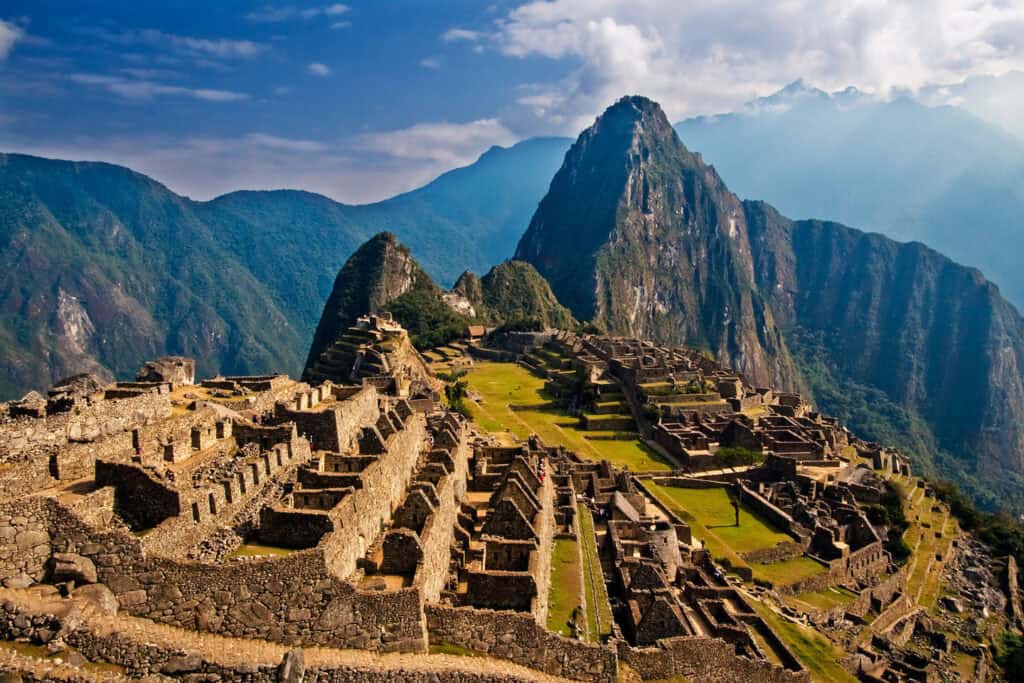
Machu Picchu is a 15th-century Inca citadel in southern Peru, perched on a mountain ridge at 2,430 meters. It is one of South America’s most famous Peru landmarks and a must-see among landmarks in South America.
Built by the Incas, this ancient city sits high in the Andes Mountains. It is a UNESCO World Heritage Site and one of the New Seven Wonders.
Visitors can explore these impressive ancient ruins, once used for ceremonies. Located above the Sacred Valley, Machu Picchu draws many tourists each year and is reached by the popular Inca Trail. At a high altitude, this historic site offers stunning views of mountains and lush landscapes.
The site’s architecture shows the Incas’ advanced skills, making it a key part of Latin American heritage. Climate change and global warming pose challenges to this iconic landmark, stressing the need for its protection.
2. Christ the Redeemer
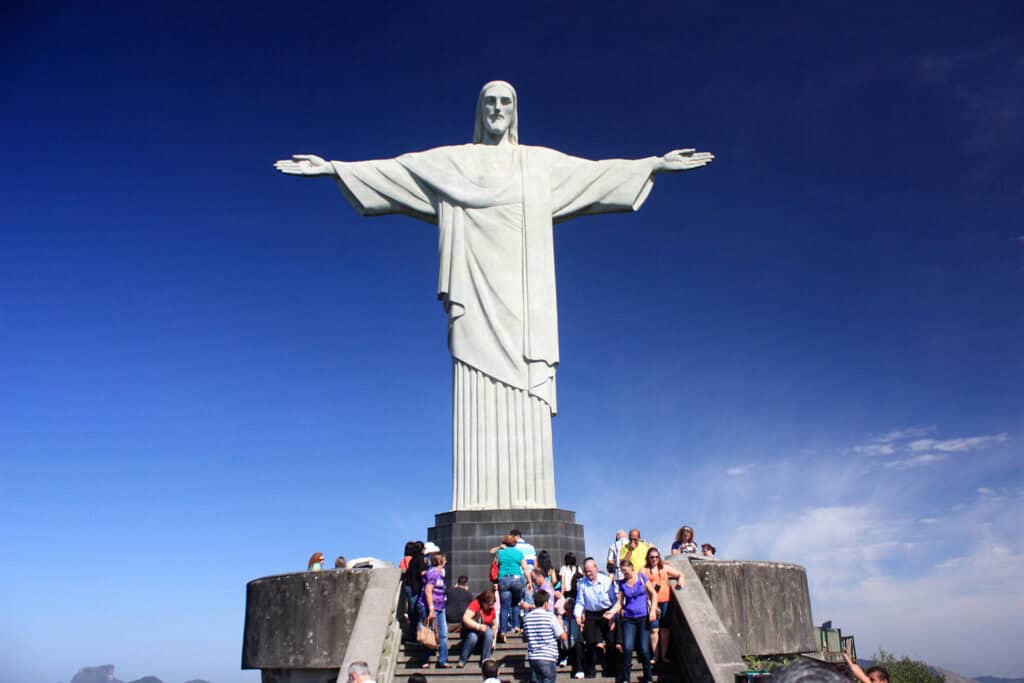
Christ the Redeemer is one of South America’s most famous landmarks. This towering redeemer statue of Jesus Christ stands on Mount Corcovado in Rio de Janeiro, Brazil.
The statue, completed in 1931, is 30 meters tall with an 8-meter pedestal and showcases Art Deco style. It offers incredible views of Guanabara Bay, Sugarloaf Mountain, and the Atlantic Ocean, making it one of the top landmarks in South America.
As a religious landmark, Christ the Redeemer symbolizes peace and acceptance. This famous Brazil Christ statue, known for its famous architecture in Brazil, draws millions of visitors each year, highlighting Brazilian culture and Christian values against stunning scenery.
3. Las Lajas Sanctuary
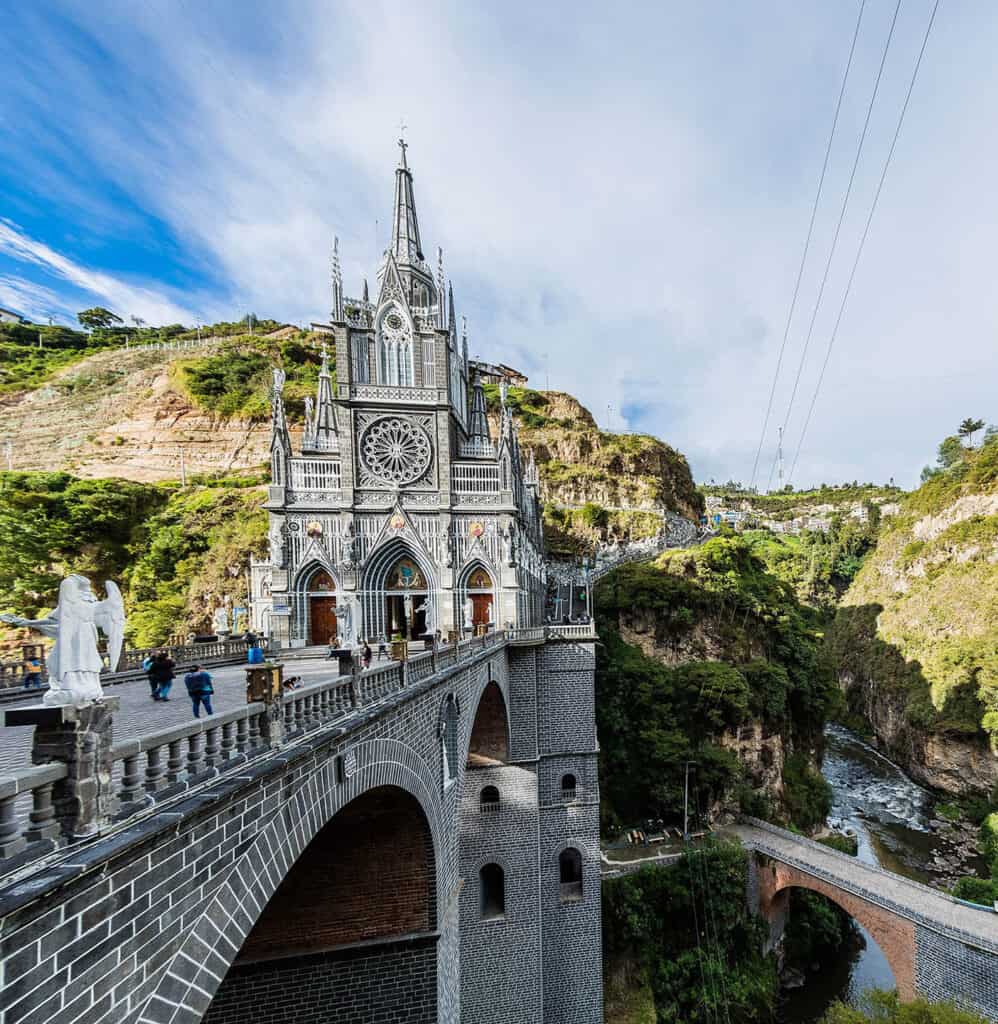
Las Lajas Sanctuary is one of the most iconic landmarks in South America. Located in Colombia, this stunning religious landmark sits on a canyon, offering spectacular views of the Guáitara River and the surrounding landscape.
The sanctuary’s Gothic Revival architecture includes impressive buttresses, spires, and a striking façade. Dedicated to the Blessed Virgin Mary, it draws many pilgrims.
Visitors come for its beauty and legends. Built over a rock wall with an image of the Madonna and Child, believed by some to be miraculous, Las Lajas Sanctuary is a major religious and cultural symbol in Colombia.
This must-see landmark attracts tourists and worshippers, adding to South America’s treasures. It is also a notable example of famous architecture in Colombia.
Historical Landmarks
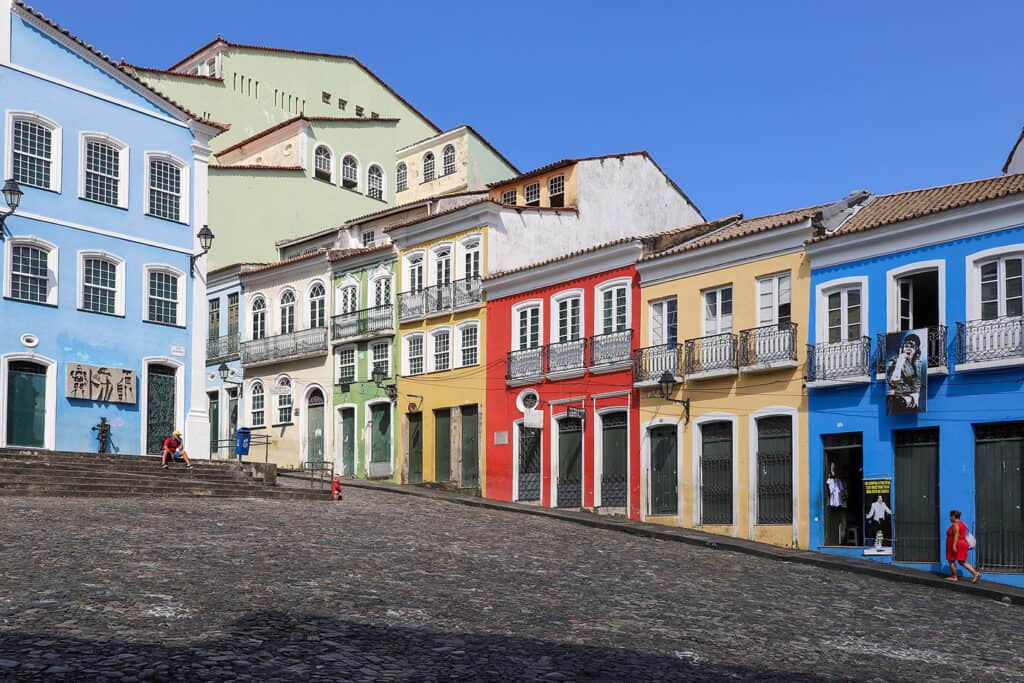
See Also Mission Style Architecture: 6 Elements That Make It Unique
4. Teatro Colón
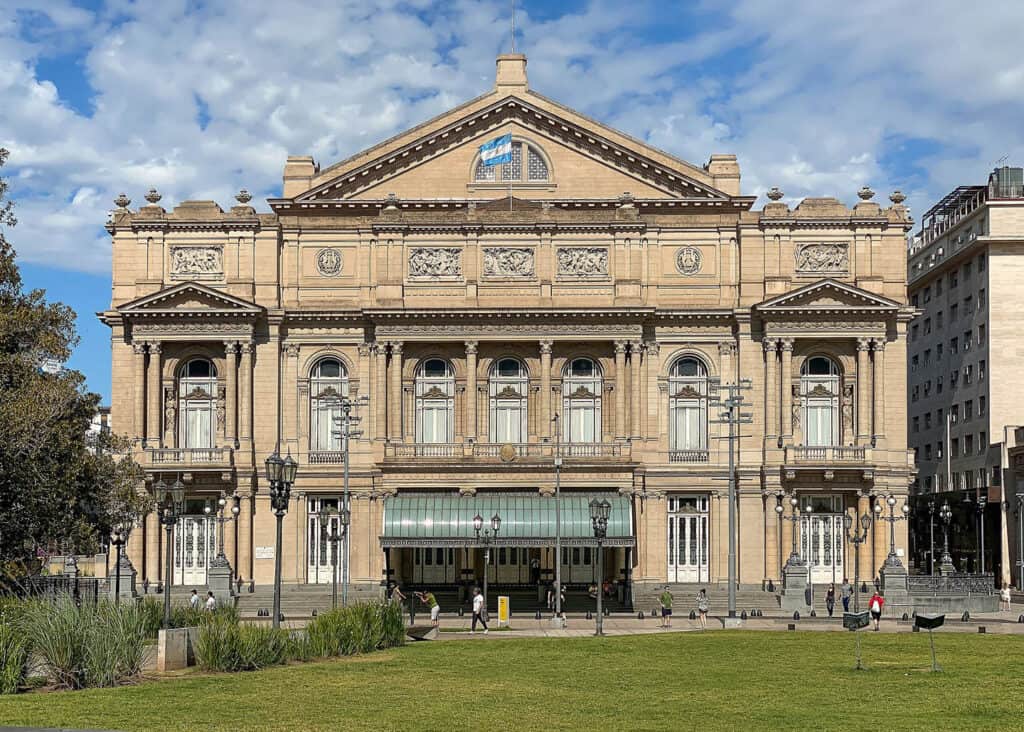
Teatro Colón is a famous landmark in Buenos Aires, the capital of Argentina. As one of the most important cultural venues and landmarks in South America, it is known for its stunning architecture. Opened in 1908, it quickly became an iconic landmark in the city.
The theater is celebrated for its excellent acoustics and hosts world-class performances, including opera, dance, and concerts.
Visitors from around the world come to experience its historic charm. Teatro Colón showcases a blend of Italian, French, and Greek architectural styles, making it a true architectural marvel and an example of famous architecture in Argentina.
5. Qorikancha (Temple of the Sun)
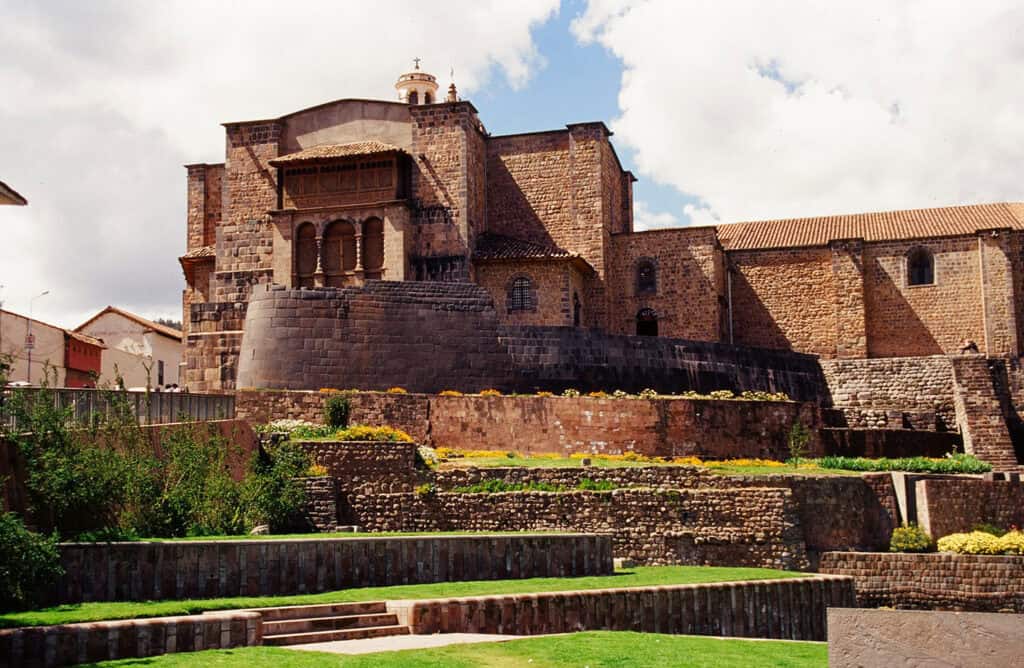
Qorikancha, also known as the Temple of the Sun, is a significant religious landmark in Cusco, Peru. Once the most important Inca temple, it was dedicated to Inti, the sun god, reflecting the central role of sun worship in ancient Peru.
The temple featured impressive architecture, with expertly crafted stone walls and gold-covered surfaces symbolizing the wealth of the Inca Empire. Although the gold was removed during the Spanish conquest, visitors today can explore the ruins and remnants of this historic site.
Qorikancha stands as a powerful symbol of Peru’s culture and heritage, attracting tourists with its rich history. Its architectural beauty and importance make it a must-visit landmark for those interested in South America’s ancient civilizations.
6. Basílica del Voto Nacional

The Basílica del Voto Nacional is a famous religious landmark in Quito, Ecuador, and one of South America’s most impressive neo-Gothic style structures.
As one of the prominent Ecuador landmarks, it features two spires reaching 115 meters high, making it the largest neo-Gothic basilica in the Americas and an iconic regional landmark.
Visitors admire intricate details, like gargoyles modeled after Ecuadorian animals such as iguanas and tortoises, which add a unique touch that reflects Ecuador’s cultural heritage. This architectural gem represents both religious devotion and artistic influence, symbolizing Ecuadorian identity through its remarkable architecture.
See Also Traditional Colombian Architecture: 5 Timeless Styles That Define Its Heritage
7. Historic Centre of Salvador de Bahia
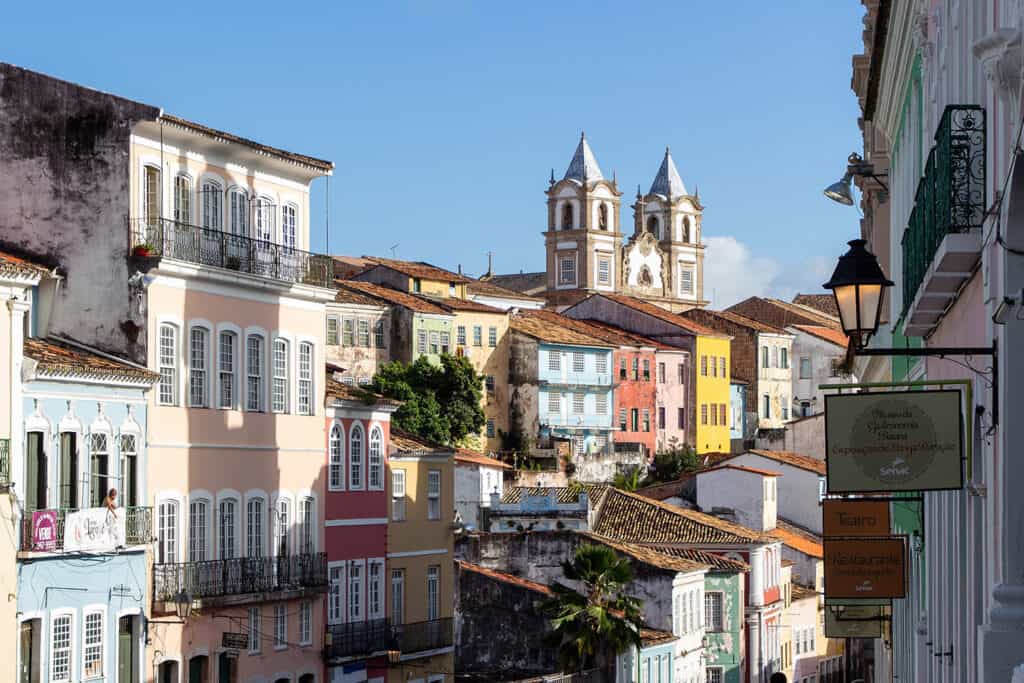
The Historic Centre of Salvador de Bahia is an iconic landmark in South America. This UNESCO World Heritage Site showcases rich colonial architecture and colorful buildings. Known as Pelourinho, it highlights Brazil’s cultural history and Afro-Brazilian heritage.
Once the first capital of Brazil, it blends European, African, and indigenous cultures. Visitors can explore narrow streets filled with impressive landmarks, including churches and plazas that reflect Salvador’s vibrant culture.
The area serves as a living museum of Brazilian history, offering insights through its architecture. The mix of history and lively atmosphere makes the Historic Centre a must-visit South American landmark.
8. Palacio Barolo
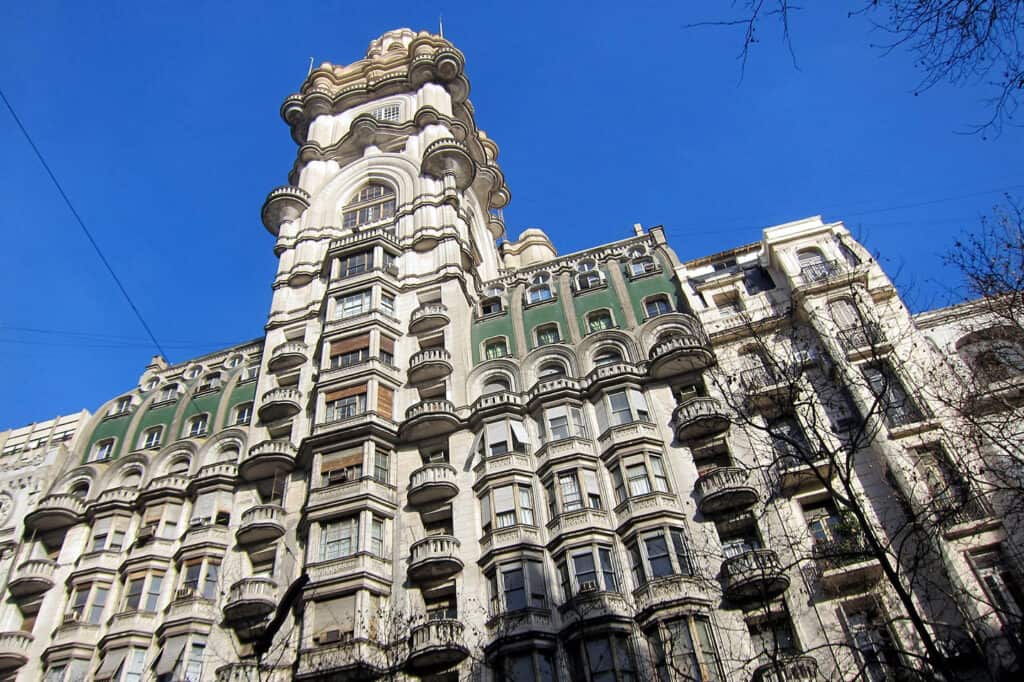
Palacio Barolo is an iconic building in Buenos Aires, Argentina, completed in 1923. Its design, inspired by Dante’s Divine Comedy, represents Hell, Purgatory, and Heaven. Standing 100 meters tall, it was the tallest building in South America until 1935.
The architecture combines Art Nouveau, Art Deco, Eclecticism, and Gothic influences.
Once an office building, Palacio Barolo still functions as one. Its impressive dome, towers, and detailed design attract visitors, making it one of South America’s most famous landmarks and an important part of Buenos Aires’ cultural heritage.
Modern Landmarks

See Also Santa Barbara’s Architectural Style: 10 Key Features to Know
9. Gran Torre Santiago

Gran Torre Santiago is an iconic landmark in South America, located in Santiago, Chile. At 300 meters (980 feet), it is the tallest building in South America. The 64-story skyscraper has a modern design and is a key part of the city’s skyline.
Visitors can enjoy stunning views of Santiago and the Andes mountains from its observation deck. Part of the Costanera Center complex includes a shopping mall and business center, serving both tourists and local businesses.
Gran Torre Santiago represents Chile’s progress in modern architecture, showcasing modern architectural styles, and making it a must-see landmark in South America and a prime example of famous architecture in Chile.
10. Cathedral of Brasília
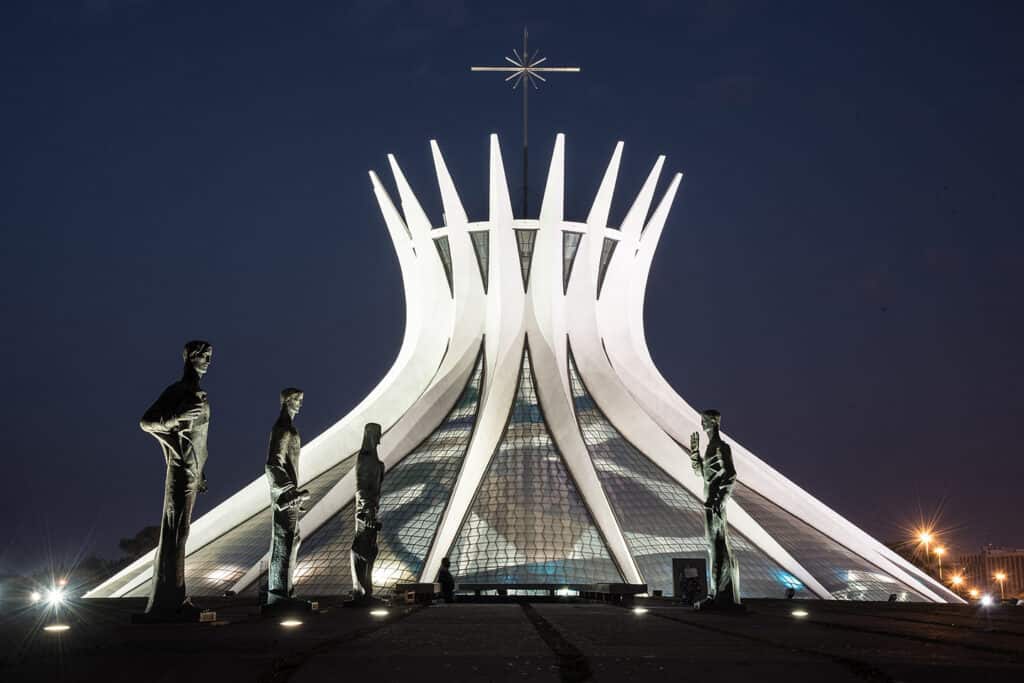
The Cathedral of Brasília is an iconic landmark in Brazil, designed by architect Oscar Niemeyer and completed in 1970. Its 16 parabolic concrete columns represent hands reaching toward the sky, blending modern architecture with Brazilian modernism.
Made of concrete and glass, the cathedral’s interior is filled with natural light. It is a stunning landmark in South America, admired for its beauty and innovation.
This famous landmark is an important part of Brazil’s architectural heritage and attracts visitors from around the world, showcasing Oscar Niemeyer’s architectural style and leaving a lasting impression on the world of design.
11. São Paulo Museum of Art (MASP)
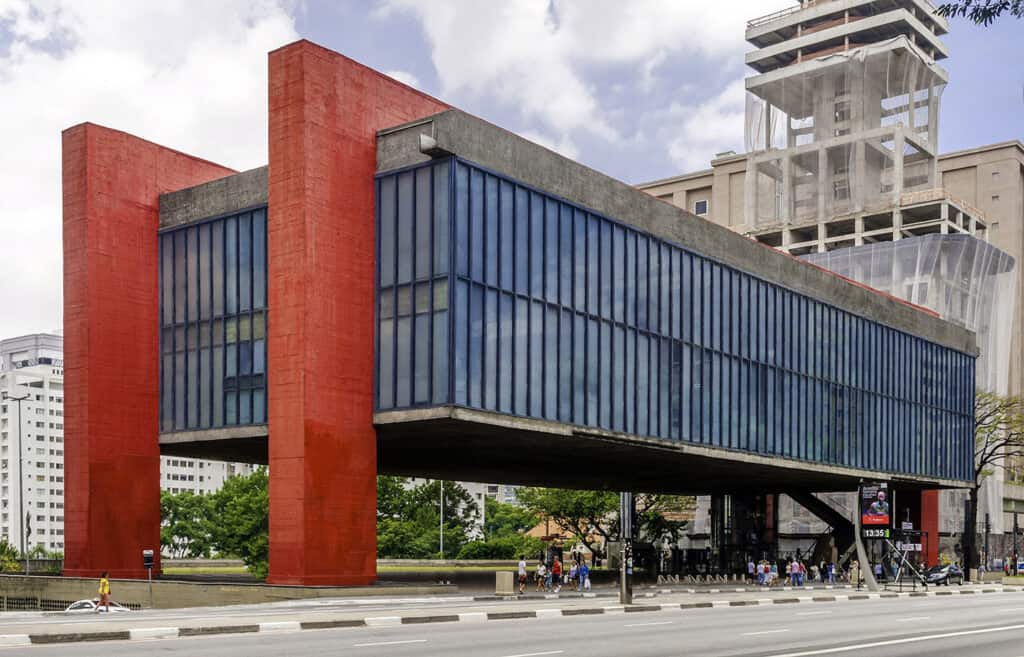
The São Paulo Museum of Art (MASP) is a famous cultural landmark in Brazil, located in São Paulo. It is known for its modern architecture and houses over 11,000 works of art by national and international artists.
Designed by Lina Bo Bardi and completed in 1968, the museum has an elevated structure with an open space underneath, popular for gatherings. MASP is a key destination for art lovers and an iconic landmark in South America.
12. Casa Pueblo
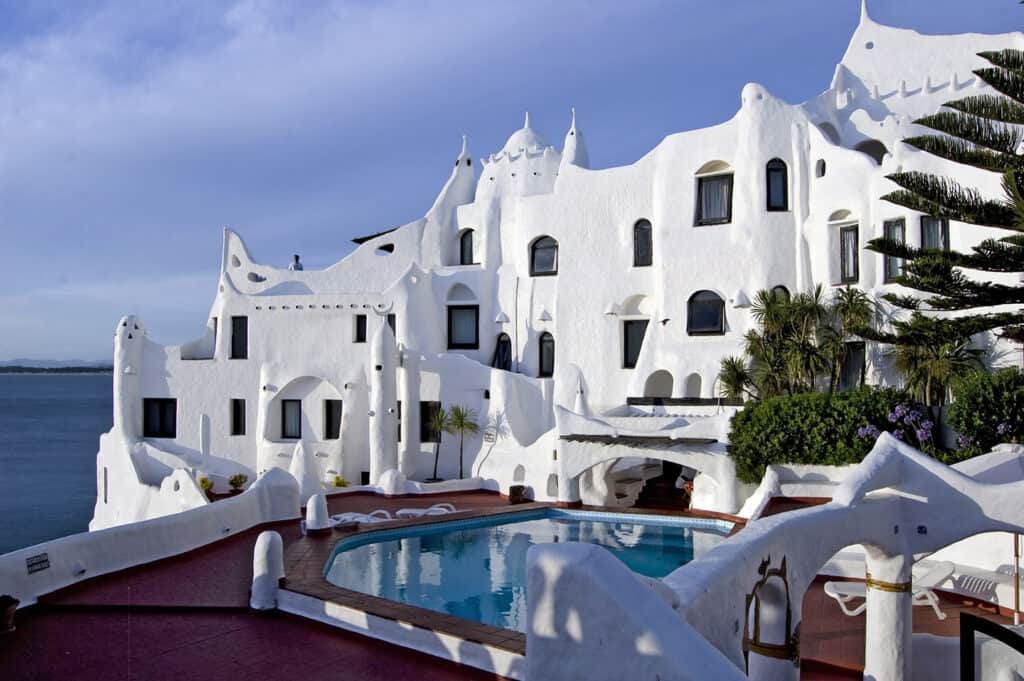
Casa Pueblo is a famous landmark in Uruguay, located in Punta Ballena. Designed by artist Carlos Páez Vilaró, it served as his home and workshop.
The building features unique white walls cascading down a cliff, offering stunning ocean views. It now functions as a museum and gallery, displaying Páez Vilaró’s art and sculptures.
As a cultural landmark, Casa Pueblo attracts visitors who appreciate art and architecture. Its beautiful setting and artistic importance make it an iconic South American landmark.
Natural Landmarks
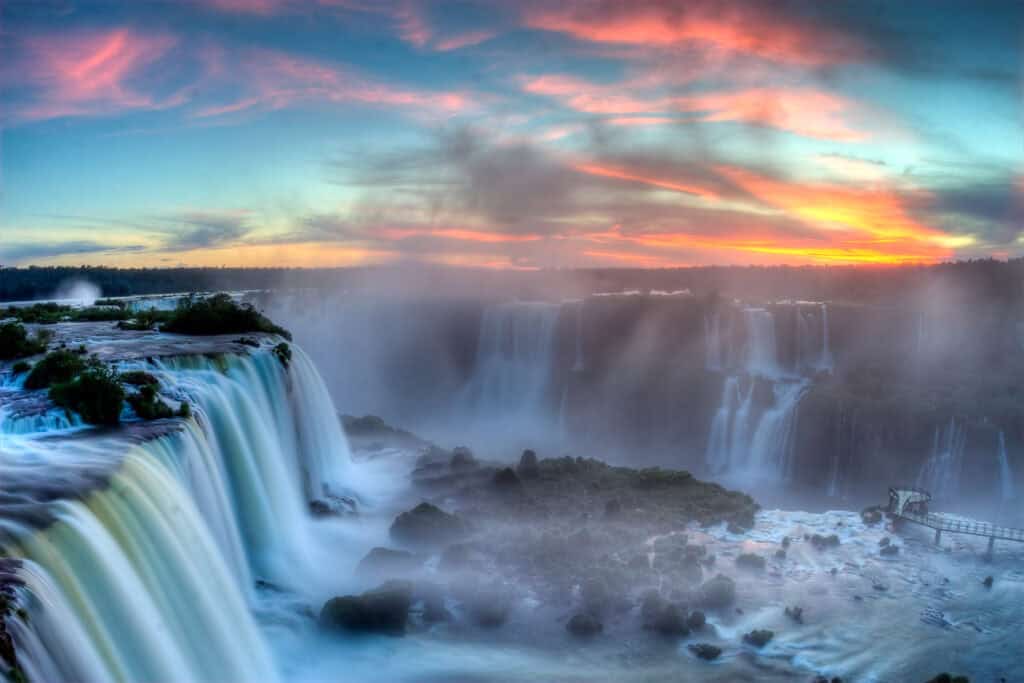
South America has many stunning natural landmarks. Iguazu Falls, on the border of Argentina and Brazil, has 275 waterfalls, offering great views and wildlife opportunities. Torres del Paine National Park in Chile is famous for its dramatic mountains and wildlife.
Hikers enjoy its scenic trails. The Atacama Desert, one of the driest places on Earth, features unique landscapes like Moon Valley and stunning sunsets.
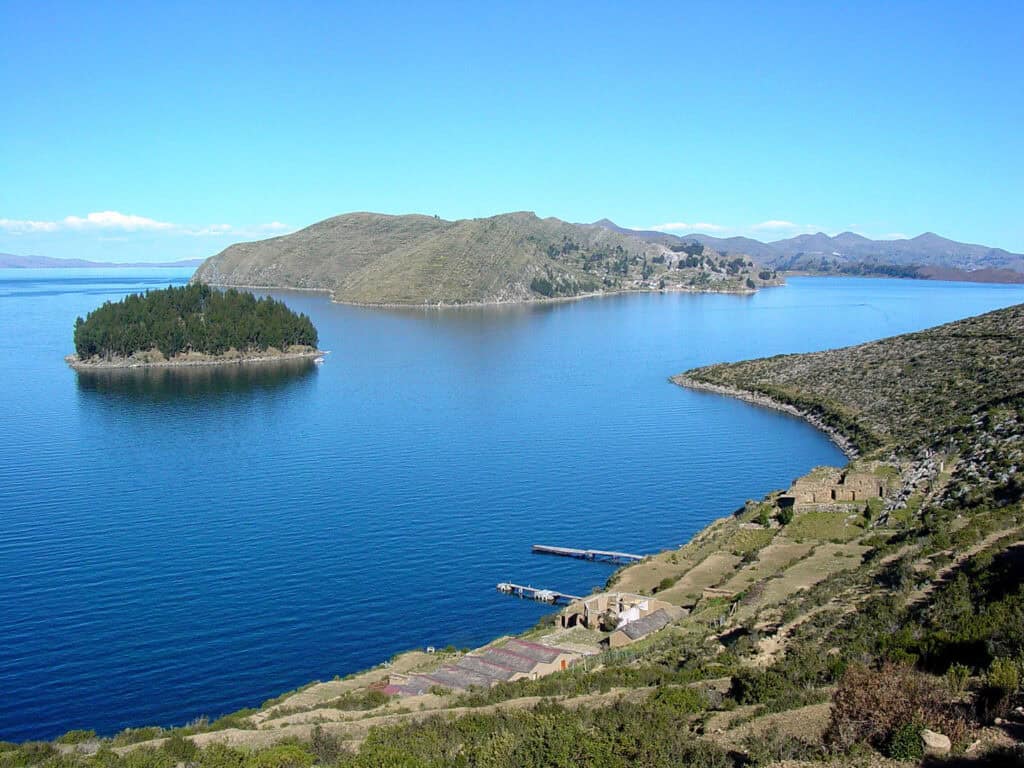
Angel Falls in Venezuela is the world’s tallest waterfall, with a 3,212-foot drop, attracting many adventure seekers. As one of the most impressive Venezuela landmarks, it offers breathtaking views and is a must-see for those exploring the natural wonders of South America.
The Galapagos Islands offer incredible scenery and wildlife, such as giant tortoises and marine iguanas. Lake Titicaca, shared by Peru and Bolivia, is the highest navigable lake in the world, with floating islands home to the Uros people.
Famous Landmark in South America: A Recap
South America’s most famous landmarks are not just beautiful—they represent the rich culture and creativity of the region. From the ancient Inca site of Machu Picchu to the modern Gran Torre Santiago, these landmarks show a mix of history, art, and innovation.
Whether religious, like Christ the Redeemer, or cultural, like Teatro Colón, they help us understand the diverse and unique identity of South America.



